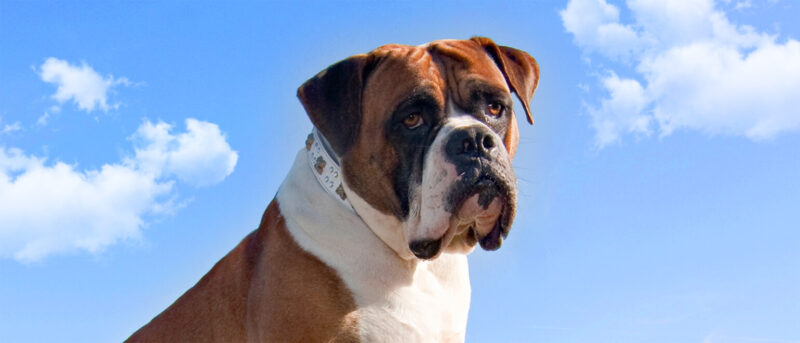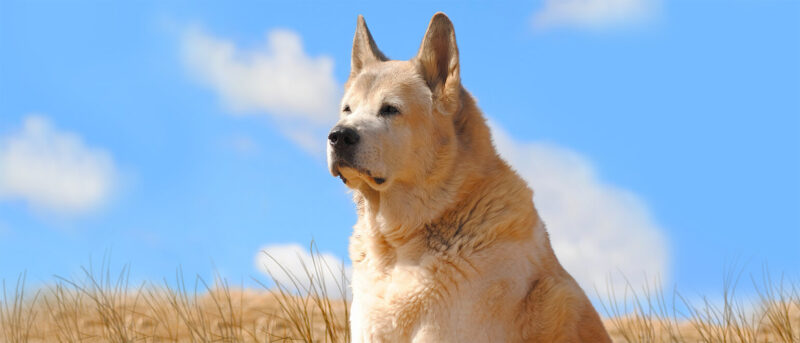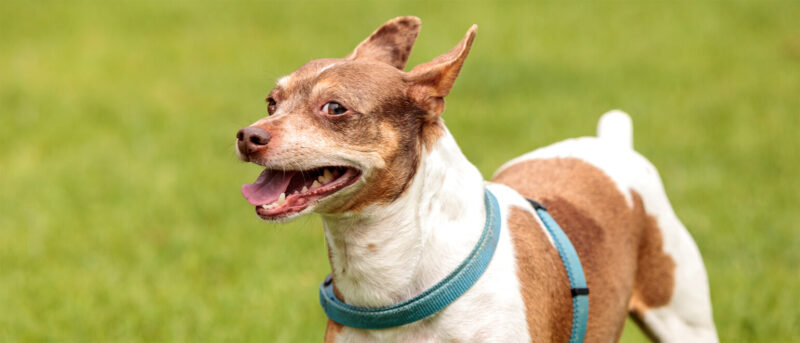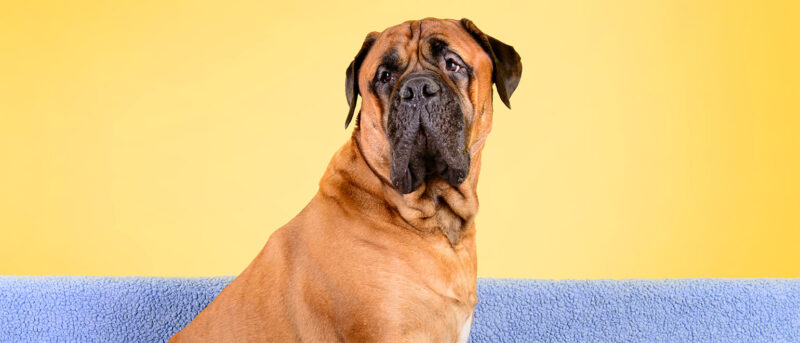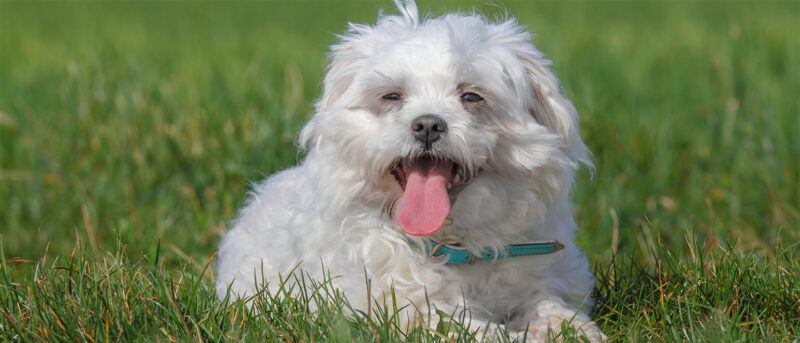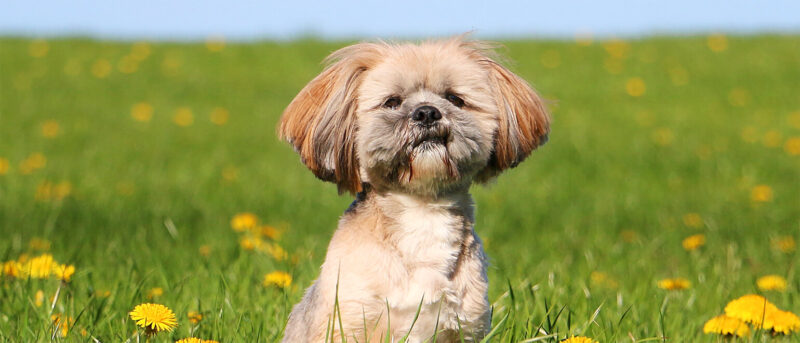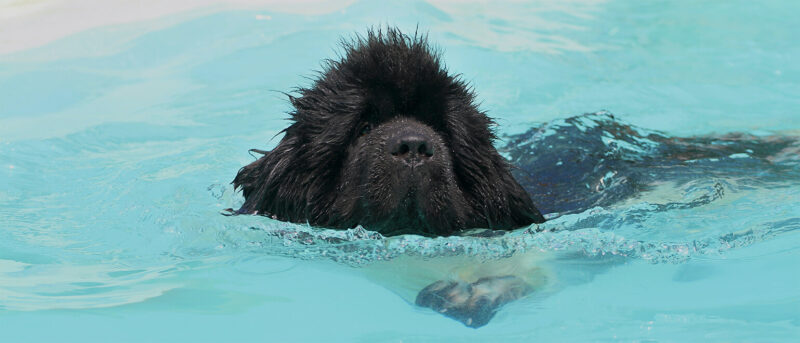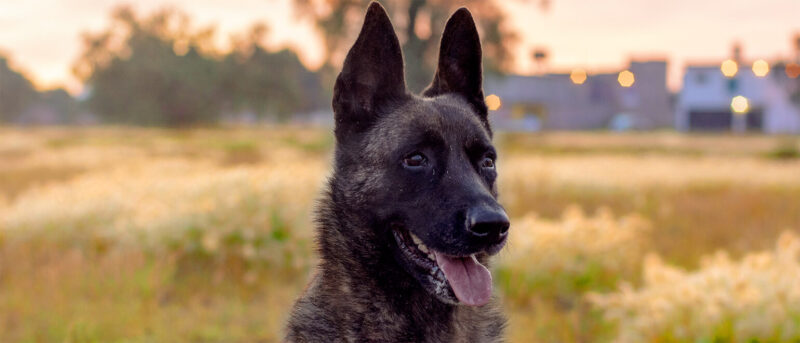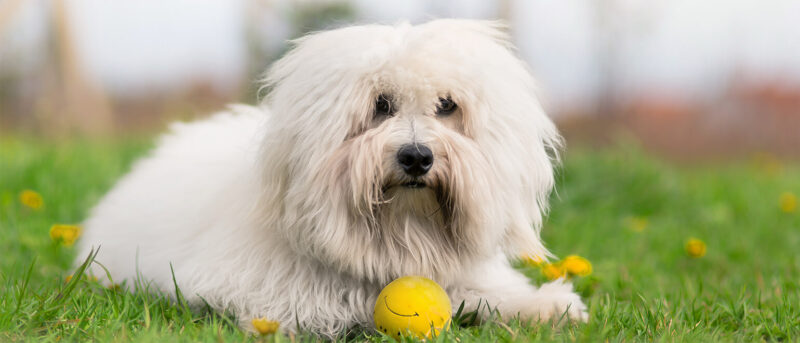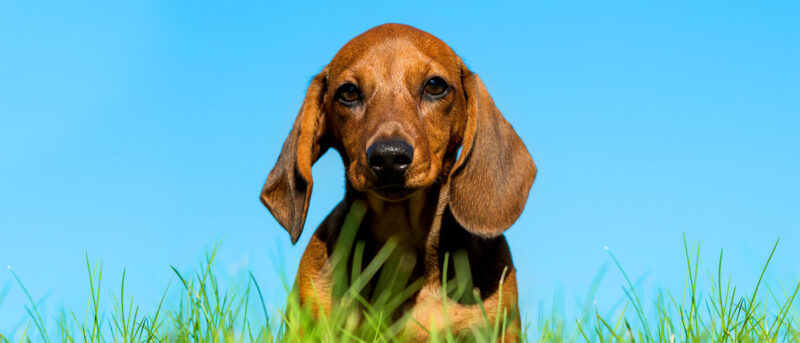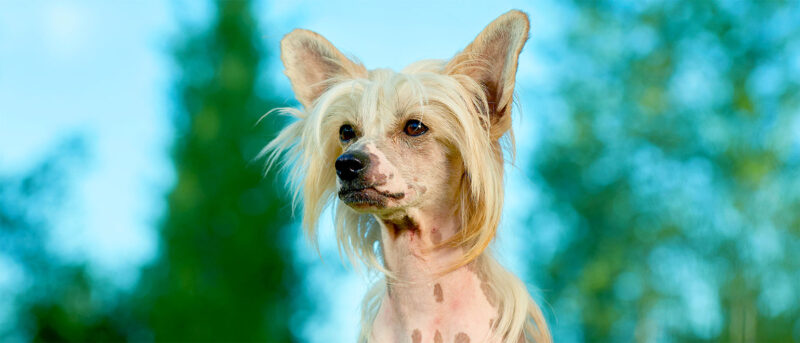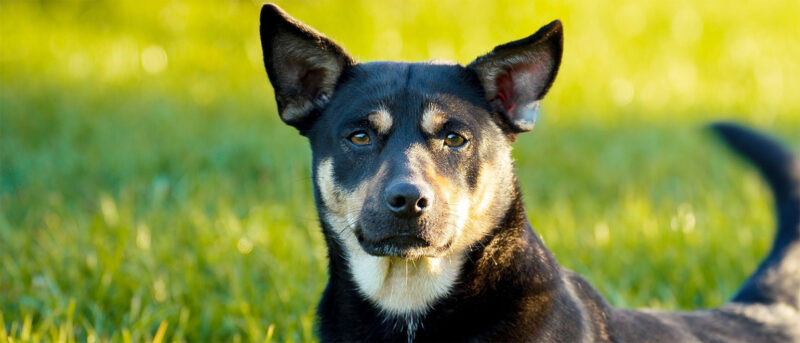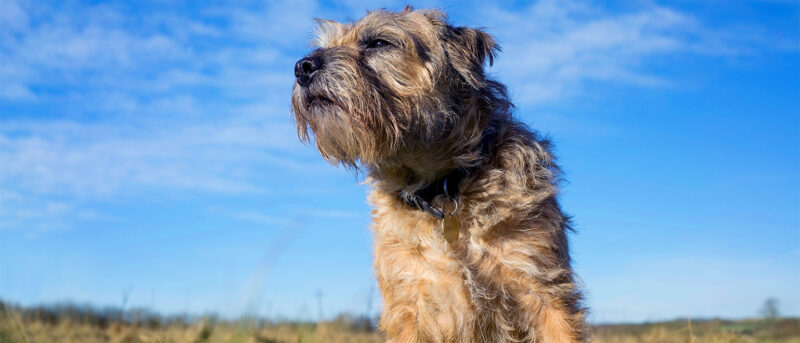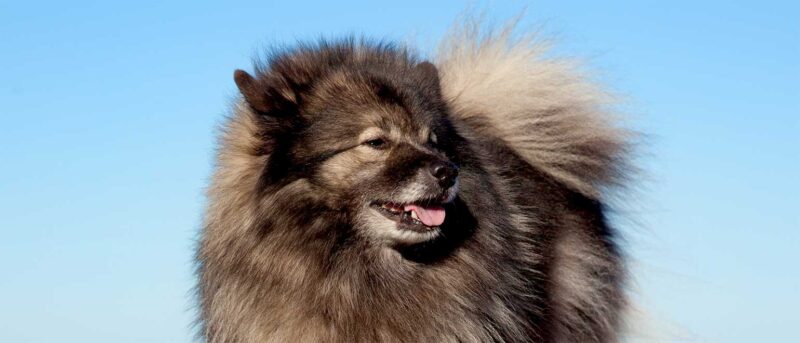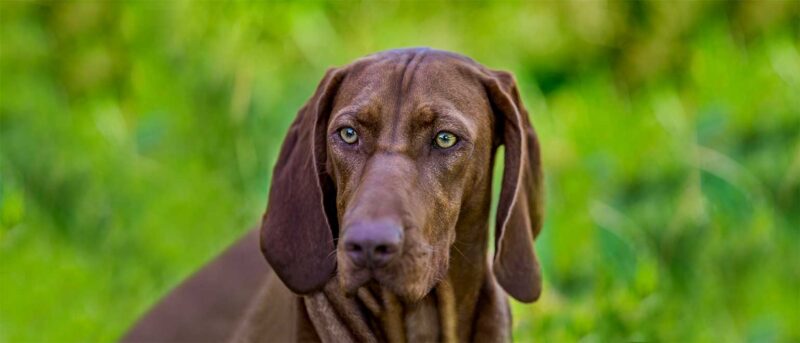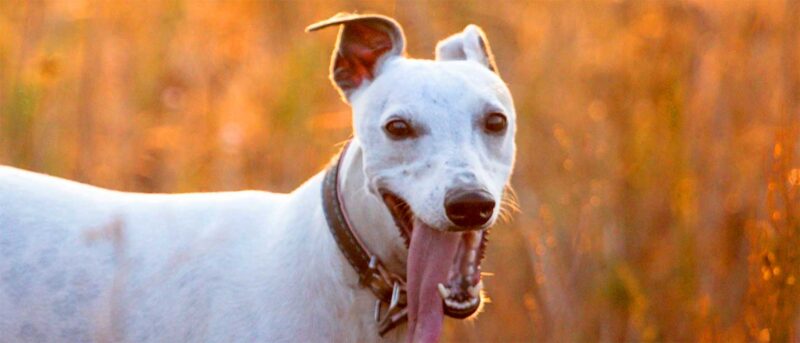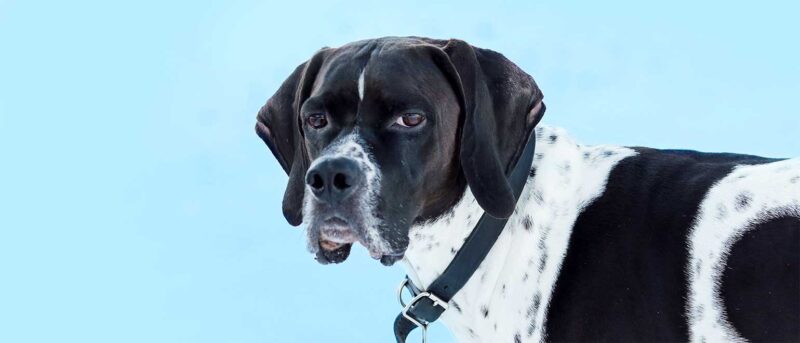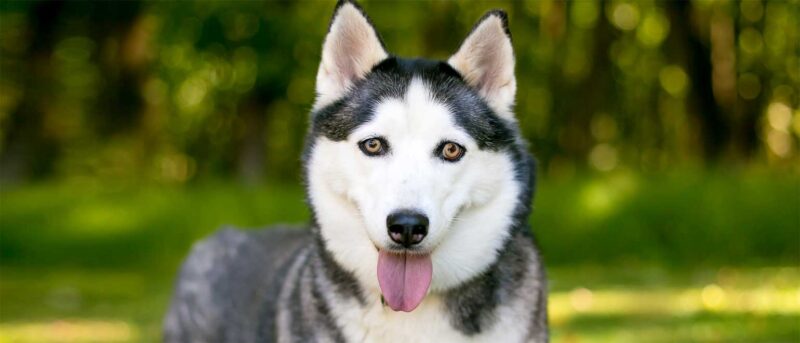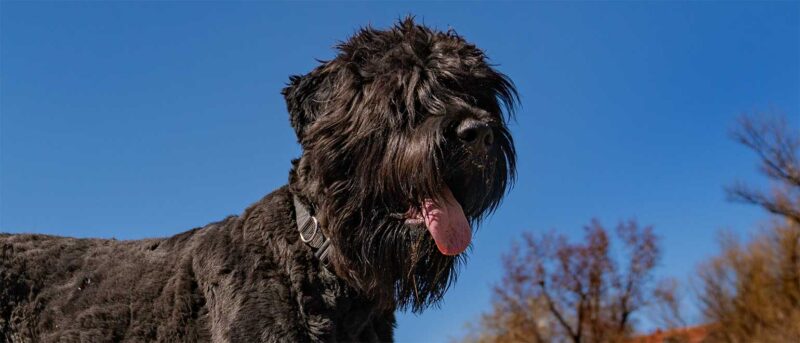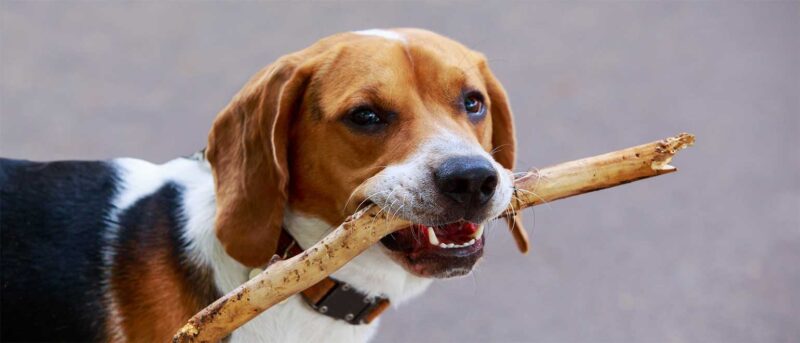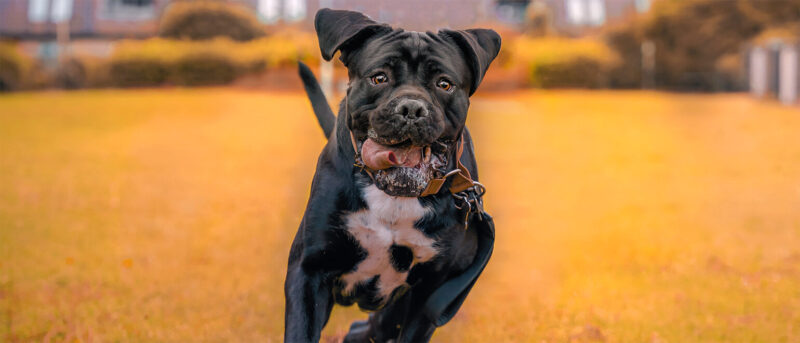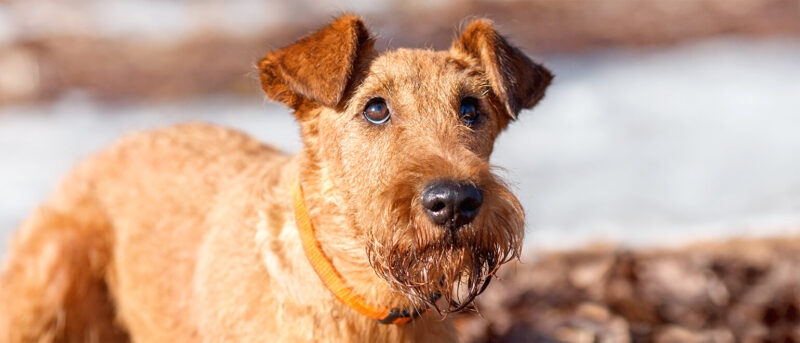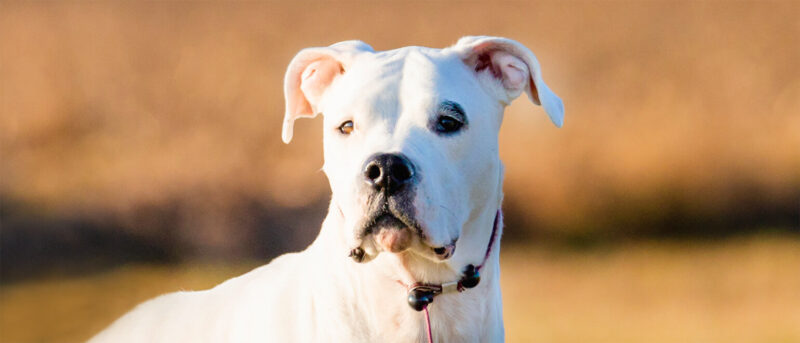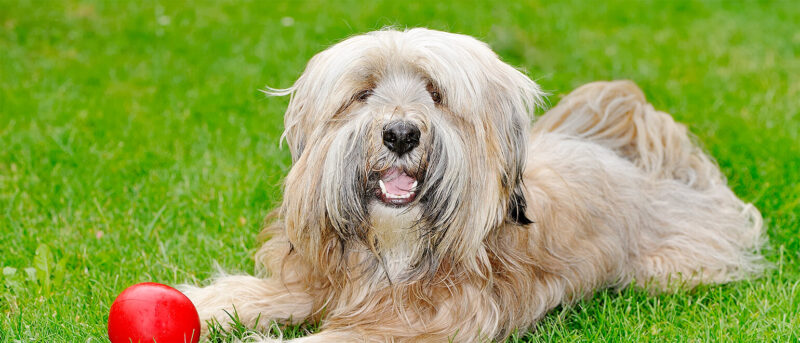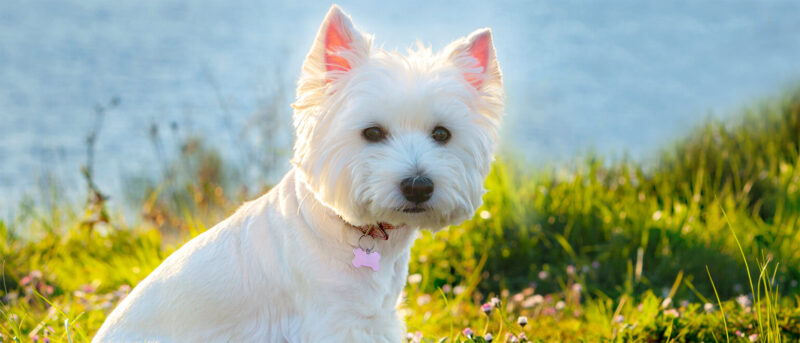English Shepherd Dog Breed Guide: Learn About This Talented Canine
Are you looking for a canine superhero? Discover the versatile English Shepherd! This all-purpose dog can be found herding livestock, competing in agility events, or leading search and rescue missions. The English Shepherd is an intelligent and determined dog breed that can accomplish anything it sets its mind to. The history of the English Shepherd […]
Are you looking for a canine superhero? Discover the versatile English Shepherd! This all-purpose dog can be found herding livestock, competing in agility events, or leading search and rescue missions. The English Shepherd is an intelligent and determined dog breed that can accomplish anything it sets its mind to.
The history of the English Shepherd centers around its duties around the farm, herding livestock. Despite its agricultural origins, this breed is now a popular indoor pet. This smart and active dog can live happily as a family pet without their traditional farm duties as long as you provide adequate exercise and care. Read on to determine if this loyal and gentle breed is right for your home.
English Shepherd Characteristics (Physical)
Built for speed and agility, the English Shepherd has a sleek and sturdy appearance. They also have an alert and intelligent expression. The United Kennel Club notes that the breed’s appearance, personality, and movement reflect its abilities as a livestock herder.
English Shepherd Dog Breed Size
The English Shepherd is classified as a medium-sized breed. Males typically range from 20 to 21 inches in height and weigh between 45 to 60 pounds. Females are slightly smaller, generally measuring 19 to 20 inches tall and weighing 40 to 50 pounds.
Head
The English Shepherd has a medium-sized head that is rounded at the top and broad and flat above the eyes. Their ears are set wide at the base with a folded-over shape, lying close to the head. The head and neck are slightly raised.
With a broad muzzle and strong, deep jaws, this breed has a powerful appearance. The neck of this dog is well-muscled and blends smoothly into the shoulders.
Eyes
The eyes of an English Shepherd are medium to dark brown in color. Their eyes are round and expressive, giving the dog a strong and intelligent appearance.
Body
The English Shepherd has shoulders that gently slope back and are of equal length to their upper arms. Their forelegs are straight and muscular, giving them a flexible appearance. With wide and muscular hindquarters, their gait is strong and springy. The feet of the English Shepherd are compact with deep pads.
Tail
This breed’s tail is very distinctive. It is fairly long and carried higher than their back, with a slight curve noticeable. It should never be held straight up or over the back. That being said, natural bobtails are also acceptable, meaning their tail can vary from six to eight inches long.
English Shepherd Personality
The personality of the English Shepherd makes them great both at home and on the farm. Bred to work, this is a dog that needs to be productive. This breed prefers working in a field over chasing a ball in the backyard. Their strong herding instinct often comes out during chaotic moments, such as when rowdy children are playing outside. You’ll find the English Shepherd instinctively trying to take charge by rounding up the kids.
The English Shepherd makes a loving family dog because they are so naturally gentle. They make devoted family companions and loyal watchdogs. While they may not be the most cuddly dog breed, they express their love by trying to find ways to help the family and love being involved with family activities.
English Shepherds are skeptical of unfamiliar dogs and humans. Once they get to know someone and feel comfortable, they are incredibly warm and friendly. These loyal dogs are also naturally intelligent with a lot of patience and empathy for other dogs and people. These dogs are also very calm (if they receive proper exercise) and don’t often bark as they are eager to please their humans.
English Shepherd Dog Breed Exercise
The English Shepherd thrives when placed with an active family. This dog needs an hour to two hours a day of exercise, whether that’s in the form of long hikes or intense backyard play.
When the English Shepherd does not receive the proper amount of exercise, they may become anxious and a bit hyper. Their pent-up energy can express itself in negative ways with destructive behavior. It is common for English Shepherds to behave badly if they don’t receive an outlet for their high energy levels.
This breed is perfect for you if you enjoy jogging outdoors on nature trails. They require regular walks and hours of playing fetch or participating in other engaging outdoor activities. The English Shepherd is not well-suited to apartment living unless their owner is highly active outdoors.
To effectively stimulate your English Shepherd, consider activities beyond simple neighborhood walks. English Shepherds thrive in organized competitions where they can work towards specific goals. These events include agility challenges, dock jumping, obedience trials, and precision coursing, many of which are organized by the UKC (United Kennel Club).
Agility
These high-energy sports competitions offer an excellent outlet to expend your Shepherd’s energy and enhance communication skills. They feature specially designed obstacle courses with tunnels, bridges, jumps, and more. The goal is to complete the course as quickly and accurately as possible. Many of these obstacles can be recreated in your own backyard, providing an exciting and engaging activity for your English Shepherd.
Dock Jumping
Dogs that love the water thrive in this high-flying competition. Dogs sprint down the dock and leap towards a target, aiming to see how far they can reach before landing in the pool below. If your dog is toy-driven, you can train them by tossing their favorite toys into the water. For safety reasons, it’s important to ensure they are comfortable swimming before starting this training.
Obedience Trials
In obedience trials, dogs must execute a series of intricate exercises under the command of their handler/owner. These trials include everything from basic novice tasks to advanced skills such as retrieval and following hand signals. Participating in these competitions fosters a unique bond with your dog. The English Shepherd’s natural intelligence and loyalty help them to shine in these types of competitions.
Weight Pull
One of the most interesting events hosted by the UKC is the weight pull. This event requires your dog to pull an object in order to win, testing their muscles and determination. In this event, your English Shepherd will be harnessed and then must pull a weighted sled or cart a certain distance within 60 seconds. This breed’s unwavering determination makes them well-suited for this challenge.
Precision Coursing
The English Shepherd’s innate hunting instincts make them an impressive competition in precision coursing events. In this challenge, dogs race against the clock to chase an artificial lure through an enclosed course. This fast-paced sport provides an excellent challenge for high-energy dogs.
English Shepherd Training
The English Shepherd is easy to train as they are intelligent and eager-to-please dogs. Consistency is key to training these dogs and they are highly motivated by goals. Avoid punishment and negativity during your training as that will deter them from success.
The English Shepherd is renowned for its strong work ethic, excelling in tasks such as herding livestock, hunting vermin, and even performing search and rescue missions. This intelligent and determined breed readily learns complex new tasks. Engaging in sports is an excellent way to satisfy their hardworking instincts. This active breed is a member of the sporting dog group.
We’ve already discussed frisbee, agility, and other dog sports that your English Shepherd may enjoy, but did you know that this dog breed also loves to swim? Swimming provides another excellent form of exercise for your dog and can add needed variety to their exercise routine.
Their high intelligence supports their independent nature. This independent streak can express itself as stubbornness at times. This can present itself as a challenge for newer dog owners who aren’t used to providing firm leadership for their pets. This dog will respect and obey a competent and loving leader.
Another great way to motivate your dog to learn new tricks is to reward them with treats! Buy some healthy treats to act as tasty rewards for your dog. In addition to treats, English Shepherds also respond well to affection and praise. As long as you are confident and consistent, your dog will listen and learn.
You can start obedience training and socialization courses for your English Shepherd when they are a puppy. While an English Shepherd is typically gentle, they can be wary of strangers, prompting the need for socialization. Socialization at a young age paves the way for better social interactions for your dog once they reach adulthood.
Training Your Dog Not to Herd
It’s important to monitor your dog’s herding behavior. Occasionally, English Shepherds may attempt to “herd” children or other pets, believing they are restoring order or helping in some way. However, this behavior can be problematic, as some dogs may resort to nipping at the heels of people or pets when herding them.
Make sure to address this behavior consistently and stop it when you notice your dog barking or nipping at other pets and people to get what they want. If your dog starts to notice that kids run away every time they nip at them, this will ingrain the negative behavior further in them as they’ll associate with them getting what they want.
If your dog approaches people with herding behavior, it’s important to instruct them to stop. Encourage your guests to turn around and face the dog, firmly saying “no.” Consistently redirecting this behavior helps your dog understand that attempting to herd people is not acceptable.
English Shepherd Dog Breed History
The English Shepherd is believed to be an ancient dog breed. Some trace the English Shepherd’s ancestry to the native sheep and cattle dogs of the British Isles who were brought over in 55 BCE when Caesar invaded.
These original English Shepherds were used to assist the Romans in herding the livestock meant to feed Caesar’s troops. As the army’s livestock decreased, the breed wasn’t seen as being needed and extra dogs were given to the natives. These early people of the British Isles bred English Shepherds with other herding dogs to enhance their natural working instincts and bolster their positive personality traits.
Years later, the new and improved English Shepherds were brought to the American colonies where the dogs quickly gained popularity for their loyalty and usefulness. With the passage of time, more were brought over to the United States. This breed eventually became combined with English and Scottish settlers’ dogs in North America, resulting in their role as both vermin hunters and livestock herders.
Impressed by the breed’s astonishing herding abilities, guarding instincts, and positive attitude, the United Kennel Club formally recognized this dog in 1927. Despite their official recognition, English Shepherds soon began to shrink in population due to the dwindling amount of small farms in the United States.
The American Kennel Club has not formally recognized this breed which means this dog is still excluded from many major dog shows. That being said, they can still be seen competing and winning at the United Kennel Club’s obedience and agility events.
The large scope of the history of the English Shepherd has resulted in them receiving many names, including the Barnyard Collie, the American Collie, the English Herder, the Cow Dog, the American Shepherd, and the Farm Collie. The prevalence of the word ‘collie’ in this list speaks to the amount of Collie (including the Border Collie and Australian Shepherd) present in the ancestry of the English Shepherd.
Common Health Problems Found in English Shepherds
Since the English Shepherd breed has a more diverse gene pool compared to other dogs, they are usually very healthy. Purebred dogs often experience more health conditions and negative traits than those with diverse genes. The English Shepherd has an average lifespan of 12 to 15 years.
If you’re interested in adopting purebred puppies, only patronize registered and reputable breeders who offer health guarantees for each litter. Ethical breeders will remove dogs with genetic conditions and health issues from their breeding pool to ensure better health for future pups.
That being said, the English Shepherd is commonly known to have sensitivities to certain prescription drugs for dogs. This allergic condition is found in 15% of English Shepherd dogs, making it a good idea to get your dog tested for allergies at the vet.
English Shepherds, like many dogs, are susceptible to common health issues such as hip dysplasia and visual impairments. Hip dysplasia occurs when the hip joint is malformed, causing mobility issues and discomfort. If untreated, this condition can lead to lethargy and lameness in your dog. Regular veterinary check-ups and appropriate care can help manage these potential health concerns effectively.
Glaucoma and corneal damage are prevalent issues across all dog breeds, including mutts. Glaucoma affects almost 2% of all dogs and involves a sudden rise in eye pressure, causing severe pain, redness, and potential vision loss. It’s important to regularly check your dog’s eyes for signs such as scratches, redness, or cloudiness. These conditions should also be monitored by a veterinarian during routine check-ups to ensure early detection and appropriate treatment.
Even though English Shepherds are typically healthy dogs with few genetic health concerns, they should still be brought to the vet regularly. Annual vet visits will allow your veterinary professional to check for common conditions and diseases. When caught early, your vet can provide effective treatment for health concerns that may improve your dog’s condition.
How to Care for an English Shepherd
The English Shepherd is a highly intelligent and active breed that thrives with both mental and physical stimulation. This breed may not be the ideal dog for families who are unable to maintain an active lifestyle or are away for extended periods each day.
It’s necessary to give your English Shepherd at least 90 minutes of exercise each day. It’s also important to switch it up with activities; try frisbee one day and an agility course the next!
If you plan to make running around the backyard part of your dog’s daily exercise, make sure it is secure with a fully fenced-in yard. This herding dog may take off and get distracted if it sees a neighborhood cat or squirrel.
Indoors, the English Shepherd should have access to a variety of toys such as chew toys, ropes, and puzzles. These provide mental stimulation and entertainment for them, especially when you’re occupied with other tasks.
Once they’re tired out, your English Shepherd will need a cozy dog bed to sleep in or a comfortable crate. They can also sleep in your bed if you prefer to snuggle. While this dog isn’t super cuddly, they do love being by your side as much as possible.
If you bring your English Shepherd outdoors for hikes, make sure to check their fur for ticks and other pests before going inside. Additionally, you should regularly trim their nails, keep their eyes clean, and check their ears for wax and dirt buildup. To maintain their dental health and your dog’s overall well-being, make sure to brush your dog’s teeth nightly.
Nutrition and Feeding for an English Shepherd
The English Shepherd is a medium-sized dog that typically requires a moderate amount of food each day. A general guideline is around three cups of high-quality dog food daily. However, it’s recommended you consult with your veterinarian to determine the precise amount needed for your dog. They will consider factors such as their specific size, metabolism, and any health conditions they may have to determine the ideal food amount for your dog.
For optimal nutrition, it’s recommended to feed your dog twice a day, dividing their daily food into morning and evening servings. Establishing regular feeding times is generally the most effective routine for English Shepherds. It’s also important to avoid feeding them human food or unhealthy treats.
When looking for dog food brands, look for foods formulated specifically for pets with high activity levels. You may even be able to find some “working dog food” options. These foods tend to have more calories in the form of proteins and fats. Be sure to read the food label to ensure that it has adequate nutrition and flavors your dog enjoys.
Coat Color And Grooming
The English Shepherd’s thick, glossy coat is one of their most distinctive traits. It can be curly, straight, or wavy. Regardless of hair texture, the fur is always soft. Their undercoat is fine and protects your dog from the elements. Their fluffy tail includes plume-like fur that looks almost feathery. Below are their five common coat patterns.
Black and White
The black and white English Shepherd displays a distinctive coat pattern featuring well-defined black coloring with white trim. This includes a white neck ring and a patch of white on the foreface, which covers the top of the head.
Black and Tan
This color variation showcases a well-defined black coat with tan trim instead of white. The tan markings typically appear on the dog’s cheeks, over the eyes, on the chest, front legs, inside the hind legs, feet, under the tail, and inside the ears. Occasionally, they may also have additional white markings on their chest.
Black, Tan, and White (Tri-Color)
Tri-color English Shepherds typically feature a predominantly tan coat with white markings in certain spots. They have ovular patches of tan fur around the eyes, known as “shepherd spots.” White markings are usually seen in typical trim areas like on the chest, the front legs, or under the tail.
Sable and White
This variation features a distinct sable-colored coat with white trim. Sable coats have hair shafts that are lighter at the base and darken towards the tip, creating a natural ombre effect.
Tan and White
An English Shepherd with a well-defined tan coat may exhibit various shades ranging from fawn to red. The trim typically includes white markings around the chest and under the tail. It’s important to note that in all color varieties, an English Shepherd dog should not have white covering more than one-third of their body.
As the English Shepherd’s coat is pretty thick, they will require regular grooming. Weekly brushing with a firm bristle brush is recommended. Regular grooming helps to minimize excess shedding in this breed. Bathing is only necessary when the dog gets dirty, such as after swimming or running through muddy areas.
Children And Other Pets
The English Shepherd makes an excellent companion for the entire family, including children and other pets. Known for patience, friendliness, loyalty, and gentleness, this breed typically remains quiet, even when their herding instincts emerge. While they may exhibit firmness, English Shepherds are seldom aggressive or hostile.
It is still recommended you supervise your English Shepherd when they’re around children and smaller pets, especially ones they don’t know. This breed can be hesitant around strangers and take time to get to know new arrivals. Also, be on the lookout for herding behaviors so you can quickly correct them.
English Shepherd Dog Rescue Groups
The English Shepherd is a devoted and affectionate family companion, eager to please and relatively easy to train. Unfortunately, unforeseen circumstances can sometimes force people to give up their beloved pets. In such cases, rescue organizations like the National English Shepherd Rescue step in and help find new homes for these dogs in need.
This wonderful non-profit organization works hard to place English Shepherds in new homes. While the National English Shepherd Rescue focuses on rescuing English Shepherds, they also collaborate with other rescues and shelters to find new, loving homes for other shepherding dogs in need.
The National English Shepherd Rescue notes that this breed is often mistaken for a Collie, Australian Shepherd, or even a Rottweiler mix when brought into shelters. This confusion arises because English Shepherds are not commonly featured in media or dog shows, which lowers their recognition among the general public.
The National English Shepherd Rescue has a keen understanding of the distinct personality and home requirements needed for the English Shepherd. Their fosters work with other professionals to provide behavioral consultations and medical evaluations for their English Shepherds. They also work with families to assist them in the training of their English Shepherds to reduce the number of dogs that get surrendered.
English Shepherd Dog Breed Organizations
Despite not being officially recognized by the AKC, the English Shepherd breed is supported by numerous official groups dedicated to the breeding and adoption of this intelligent and affectionate dog.
The English Shepherd Club is a wonderful organization that seeks to help all dogs of this breed. Their members share information for people curious about “America’s heritage farm dog”. You can find information on their website about breed standards, their unique history, where to purchase puppies, and event listings for English Shepherds and their owners.
President of this dog group, Alison Kerr declares “The English Shepherd Club is a charitable non-profit organization dedicated to the support, preservation, and responsible promotion of the English Shepherd breed and its natural working instincts.” This club sponsors owner and breeder networking, working dog events, and ongoing education about the breed.
More About the English Shepherd
The English Shepherd makes a loving and loyal pet and is one of the most important working dogs in North America. This breed learns complex commands quickly due to their high intelligence. They can also work independently without too much oversight from their owners. The English Shepherd makes a stellar guard dog, hunting dog, livestock herder, and vermin tracker. If that wasn’t enough, these incredible canines are also employed as search and rescue dogs and animal therapists.
These gentle and loving dogs make wonderful additions to any active home. The English Shepherd loves to work and accompany you on a hike or keep you company while you’re exploring the outdoors. This breed can keep your home safe from intruders and be your partner in dog sports. These loving pets can often be found close to your feet, keeping you company and watching over you.









